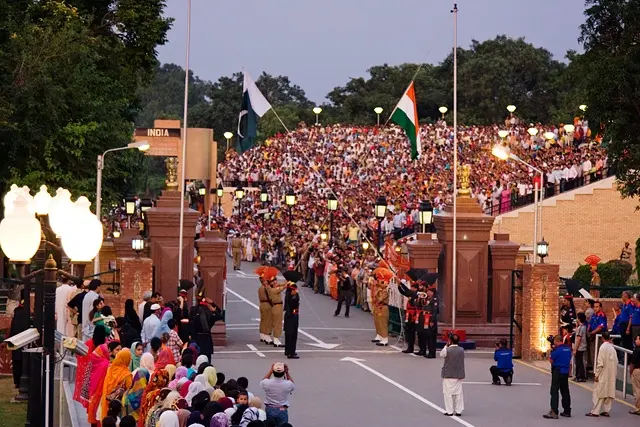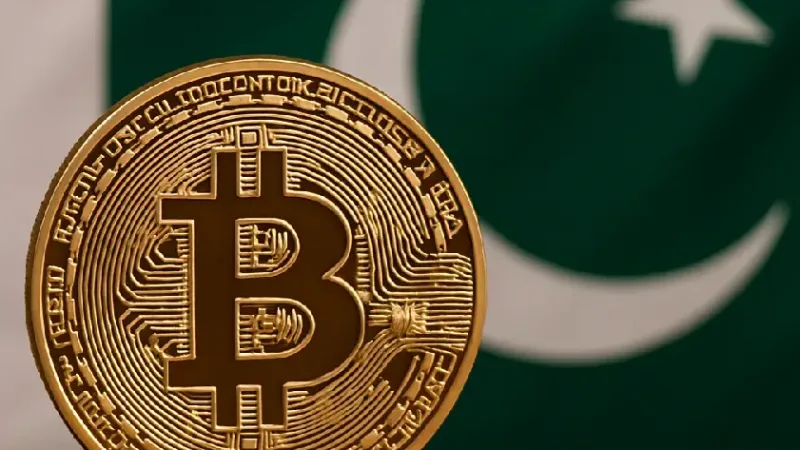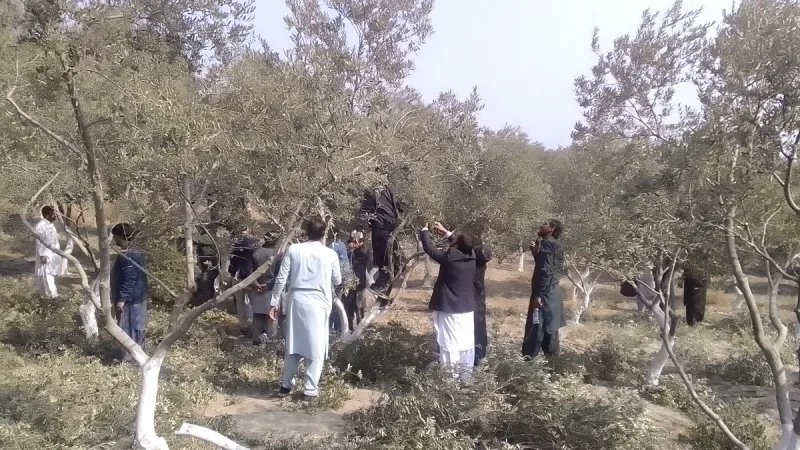Torn Lands & Nuclear Standoff: Understanding the India-Pakistan Tensions

The Kashmir dispute between India and Pakistan remains one of the most prolonged and complicated territorial conflicts in modern history. Its origins trace back to the partition of British India in 1947. During the partition, princely states were given the option to join either India or Pakistan based on geographic contiguity and demographic composition. Jammu and Kashmir, ruled by the Hindu Maharaja Hari Singh despite having a Muslim-majority population, initially chose to remain independent. However, facing an invasion by tribal militias backed by Pakistan, the Maharaja sought India’s military assistance and agreed to accede to India. This accession triggered the First Indo-Pakistani War, leading to a UN-mediated ceasefire and the establishment of the Line of Control (LoC), which remains the de facto border today.
Subsequent decades have witnessed multiple wars, insurgencies, and diplomatic failures revolving around Kashmir. The region holds immense symbolic importance for both nations. Pakistan views Kashmir as the unfinished agenda of partition and sees itself as a defender of Kashmiri Muslims, whereas India asserts Kashmir as an integral part of its secular fabric. Numerous attempts at resolving the dispute, whether through bilateral talks, United Nations interventions, or third-party mediations, have failed to achieve lasting peace. Tensions reached new heights following India’s abrogation of Article 370 in 2019, which revoked Jammu and Kashmir’s special autonomy, a move that Pakistan vehemently opposed. The dispute continues to inflame nationalistic sentiments on both sides and remains a flashpoint for potential conflict.
The recent tragic attack in Pahalgam, where militants targeted civilian tourists, has once again highlighted the persistent volatility and human cost of the Kashmir conflict. Incidents like these serve as a grim reminder that despite decades of wars, ceasefires, and peace efforts, Kashmir remains a flashpoint fraught with violence and political tension.
Tactical and Defensive Strength
India and Pakistan both maintain substantial military capabilities, covering conventional forces as well as strategic assets. India’s armed forces are among the world’s largest, with approximately 1.45 million active personnel and around 2.1 million reserves. Pakistan, while smaller in number, possesses a highly professional military force with around 654,000 active troops and approximately 550,000 in reserve.
The Indian Army fields a variety of advanced systems, including the T-90S Bhishma and Arjun main battle tanks, alongside sophisticated rocket artillery systems such as the Pinaka and highly acclaimed BrahMos cruise missiles. The Pakistani Army counters with Al-Khalid and Al-Zarrar tanks, and emphasizes tactical nuclear capabilities through systems like the Nasr missile and Babur cruise missiles. In the air domain, the Indian Air Force maintains over 2,200 aircraft, with frontline fighters including the Su-30MKI, the newly inducted Dassault Rafale, and the indigenous HAL Tejas, supplemented by strategic platforms such as airborne early warning and control systems. Pakistan’s Air Force, comprising around 1,400 aircraft, relies heavily on the F-16 Fighting Falcons, Chinese-origin JF-17 Thunders with modern AESA radar technology, and Mirage jets.
India’s Navy operates as a formidable blue-water force, boasting the INS Vikramaditya aircraft carrier, nuclear-powered submarines like INS Arihant, Kolkata-class destroyers, and Scorpène-class attack submarines. Pakistan’s Navy, though smaller, has bolstered its capabilities with modern frigates such as the Type 054A/P and submarines like the Agosta-90B, while pursuing further upgrades with Chinese support including the acquisition of Hangor-class submarines. India clearly enjoys numerical superiority and technological advantages, particularly in naval and air power. However, Pakistan has strategically focused on rapid deployment capabilities and tactical nuclear options to counterbalance India’s conventional military dominance.
Nuclear Arsenal
Both India and Pakistan possess credible nuclear deterrent capabilities, though their doctrines and deployment strategies differ significantly. India is estimated to have around 160 to 170 nuclear warheads. It officially adheres to a “No First Use” doctrine, pledging not to initiate a nuclear conflict but to retaliate massively if attacked. India’s nuclear triad is fully operational, comprising land-based missiles such as the Agni series, air-delivered bombs from aircraft, and sea-based deterrence through nuclear-powered submarines like INS Arihant. Moreover, India is actively developing MIRV (Multiple Independently Targetable Reentry Vehicle) technology to enhance its nuclear capabilities.
Pakistan is estimated to possess around 165 to 175 nuclear warheads and maintains a “First Use” doctrine, particularly to deter large-scale conventional threats. Islamabad places significant emphasis on short-range tactical nuclear weapons, such as the Nasr (Hatf-9) missile, designed to deter or blunt Indian conventional military incursions. Pakistan is also working on strengthening its second-strike capability through submarine-launched cruise missiles like the Babur-3.
The consequences of a nuclear war between India and Pakistan would be catastrophic. Immediate casualties could number in the tens of millions, with both capitals and major cities likely becoming primary targets. Beyond the immediate destruction, the environmental repercussions could be devastating, potentially causing a “nuclear winter” that would lower global temperatures, disrupt agriculture, and lead to widespread famine. The global economy would face a massive collapse, and international political systems could be destabilized for decades. Given these existential stakes, despite heated rhetoric, both nations have powerful incentives to avoid direct nuclear confrontation.
Diplomatic Relations Over Time
The diplomatic relationship between India and Pakistan has swung wildly between hostility and cautious engagement over the decades. From 1947 to 1965, relations were marred by wars and unresolved territorial disputes. The Indo-Pakistani War of 1971, culminating in the creation of Bangladesh, further embittered ties, though the Simla Agreement of 1972 pledged both sides to resolve issues bilaterally.
The 1980s and 1990s saw continued instability, with the Siachen conflict and insurgency in Kashmir dominating the agenda. Relations plummeted after the Kargil conflict in 1999, which exposed deep mistrust despite nuclear deterrence. The early 2000s saw an attempt at normalization through the Composite Dialogue Process and summits like Agra, though breakthroughs remained elusive.
Terrorist attacks such as the 2001 Indian Parliament attack and the 2008 Mumbai attacks severely harmed diplomatic engagements, leading to heightened suspicion and hostility. Recent developments, particularly India’s revocation of Kashmir’s special status in 2019, have pushed relations into a deep freeze once again. While intermittent backchannel talks in 2021-2022 offered glimmers of hope, progress has stalled, and mutual suspicion continues to dominate the bilateral landscape.
Major Wars and Outcomes
The history of India-Pakistan wars reflects the deep-rooted animosity and strategic challenges facing both nations. The First Kashmir War of 1947-1948 ended in a UN-mediated ceasefire, with Kashmir divided but no lasting resolution achieved. The Second War in 1965, triggered by Pakistani attempts to incite insurgency in Kashmir, ended militarily inconclusively, resulting in the Tashkent Agreement but no substantive territorial change.
The Third War in 1971 was a decisive victory for India, leading to the creation of Bangladesh. India captured over 90,000 Pakistani prisoners of war, a major strategic and psychological blow to Pakistan. The Kargil conflict of 1999 saw Pakistani forces occupying strategic heights on the Indian side of the LoC, but India successfully evicted them after intense fighting, and Pakistan suffered diplomatic isolation. Every military engagement has underscored that while tactical victories are possible, they rarely translate into lasting political solutions, reinforcing the futility of war as a means of dispute resolution.
Economic Comparison
India and Pakistan present starkly different economic trajectories. India, with a GDP of approximately $3.7 trillion to $4.27 trillion, has emerged as the world’s fifth-largest economy. Its strengths lie in its information technology sector, pharmaceuticals, a burgeoning startup ecosystem, and a growing manufacturing base. However, India still grapples with rural poverty, unemployment, infrastructural gaps, and deep income inequality.
Pakistan’s economy, valued at around $350 billion to $375 billion, is significantly smaller and faces chronic structural issues. Agriculture, particularly wheat and cotton, and the textile sector remain its economic mainstays. Pakistan benefits from strong remittance inflows from its diaspora. However, high external debt, fiscal deficits, energy shortages, and political instability continue to hamper economic growth. While India’s diversified economy provides it with greater resilience to global shocks, Pakistan remains heavily dependent on external financing from the IMF, China, and Gulf countries, rendering it more vulnerable to economic crises.
War Possibility and Future Outlook
Despite the periodic escalations along the LoC and intense nationalist rhetoric, the possibility of a full-scale conventional or nuclear war remains low. The presence of nuclear weapons, coupled with immense international pressure, acts as a powerful deterrent. However, the threat of hybrid warfare, including cyber-attacks, proxy insurgencies, and cross-border terrorism, will likely persist.
The future relationship between India and Pakistan appears locked in a cycle of mistrust and sporadic engagement. Sustainable peace will require bold leadership willing to take political risks, build mutual trust, and engage in meaningful dialogue. While hostility may continue for the foreseeable future, economic imperatives, demographic pressures, and global shifts toward regional cooperation could push both nations toward a less confrontational posture.
Dos and Don’ts
Experts unanimously advocate for a set of clear dos and don’ts to manage the volatile India-Pakistan relationship. Both sides must enhance economic cooperation, invest in conflict prevention mechanisms, encourage academic and cultural exchanges, and establish reliable military-to-military communication channels to prevent miscalculations. Simultaneously, aggressive political rhetoric must be avoided, terrorism must never be used as a tool of state policy, and minor incidents must be managed to prevent escalation into larger conflicts.
Conclusion
The India-Pakistan dynamic remains a complex interplay of history, identity, politics, and external influences. Past conflicts have shown the futility of war, and nuclear deterrence imposes grave responsibilities on both sides. As the economic aspirations of over 1.7 billion people demand stability and progress, leadership on both sides must rise above populist sentiments and work toward a future where cooperation replaces confrontation. Only then can South Asia realize its true potential, and future generations can be spared the burden of inherited hostilities.






